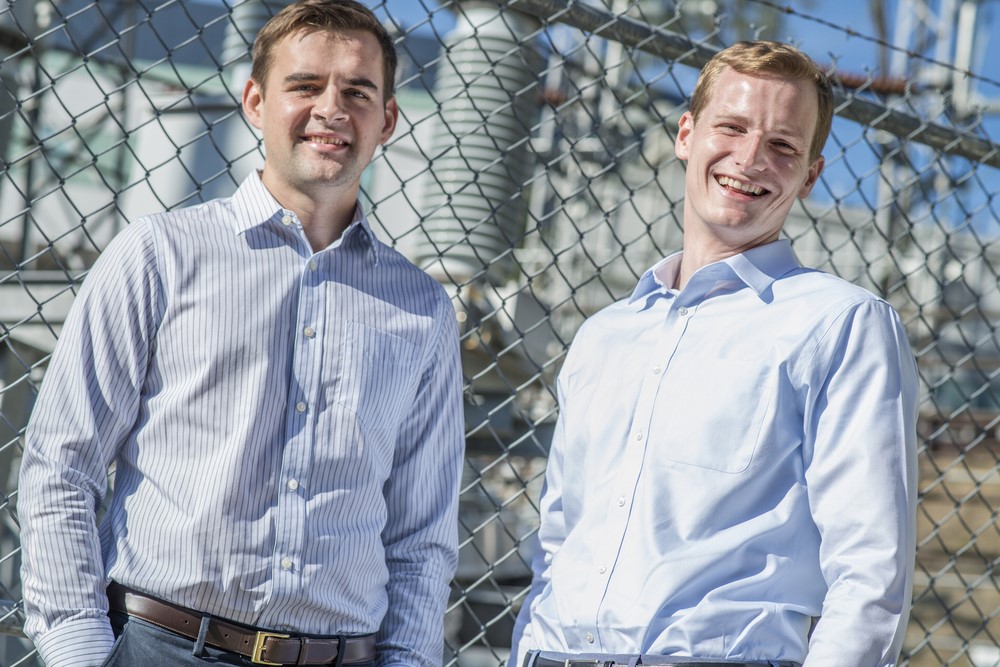
On June 16, 2015, the Administration announced $4 billion in private sector commitments and executive actions under the Clean Energy Investment Initiative—an Administration effort to catalyze investment in solutions to climate change, including innovative technologies with breakthrough potential to reduce carbon pollution. One of the commitments included in the June announcement was the expansion of a new $5 million public-private partnership to support Cyclotron Road, a home for entrepreneurial researchers to advance energy technologies until they can succeed beyond the research lab. This partnership was founded by Lawrence Berkeley National Lab, with support from the Department of Energy and private foundations. Recently, I spoke with Dan Riley and Jared Schwede, two entrepreneurs who co-founded Spark Thermionics and who are participating in Cyclotron Road.

Q. What is the technology that you are developing, and why is it important?
Power plants provide us electricity that is cheap and efficient, but only at a massive scale. What if instead we could shrink power plants down to a small package that provided quiet, clean, and efficient power generation directly in our homes and communities? We are developing an entirely new type of generator that can produce power from any fuel source at high efficiency, in a quiet package that can scale from watts to megawatts. Our technology is based on a process called thermionic energy conversion, which allows heat to be directly and cheaply converted into electricity. This technology could generate power from the huge quantities of industrial process heat that are wasted every day, or allow a family to efficiently generate all the electricity needed to power their home on site. Our vision is that thermionic generators can displace conventional power production and help bring electricity to the more than one billion people around the world without reliable access to a centralized grid, while making our power system here at home cleaner, cheaper, and more secure.
Q. What prepared you to join Cyclotron Road?
Before Cyclotron Road, we spent several years researching thermionic energy conversion as Ph.D. students at Stanford University. We learned that in the 1960s and early 1970s, researchers had made amazing progress demonstrating the capabilities of this technology. But most U.S. thermionics research was tied to the space-nuclear program, which ended in 1973, and the field never recovered after that. We saw a tremendous opportunity to apply new science developed over the last 40 years and revive this promising technology.
Q. What motivated you to apply to Cyclotron Road?
Towards the end of our Ph.D. studies, we explored the best way to bring the benefits of thermionic energy conversion to the world. The technology was mature enough to exist outside the realm of academic research, so we engaged with venture capitalists and energy experts. They agreed that our technology had enormous potential but wanted to see a prototype before a private investment would be possible. We were stuck: where could we go to develop a prototype for a technology that was too applied for academic research, but too immature for private investment?
As we were grappling with this issue, in a great example of serendipity, the Cyclotron Road program was announced. Cyclotron Road was specifically set up to target the science-to-product gap that plagues hard technologies like ours. The program offered an opportunity to go all in on building a prototype with the backing of Lawrence Berkeley National Lab (LBNL), a world-class R&D center with the type of scientific facilities and expertise we would need to get going and take our technology to the next level.
Why do you think that initiatives like Cyclotron Road are important for breakthroughs in clean energy?
Cyclotron Road’s purpose is to provide a home for innovators like us to drive their ideas forward with tremendous focus and support. It’s much more than just a funding stream. As we were leaving our PhDs, the traditional technology development paths through academia and industry were not a good fit for such a high-risk, high-reward applied project with scientific challenges to overcome. This program gave us a path forward that didn’t otherwise exist.
We think this issue applies more broadly for clean energy technologies, most of which are based on physical science innovations. Investors can’t afford to build a highly sophisticated laboratory for every startup like ours, especially given the opportunities they have to invest in other technologies that are less expensive – like smartphone apps. Providing a home for hard entrepreneurial projects by supporting those projects at a major R&D institution could significantly enhance the chances of success in the end. For example, over the last year in Cyclotron Road, we’ve had a chance to start addressing our biggest technology risks and have identified the system engineering requirements for our technology, all thanks to the cutting-edge equipment and technical experts at LBNL. It's hard to imagine developing a breakthrough energy technology without these resources.
What is a typical day on Cyclotron Road like for you?
Every day is different! There are many opportunities available as part of Cyclotron Road, designed to tackle all aspects of bringing a technology to market. Aside from building up our experimental systems in the lab and studying materials at the Molecular Foundry (a national nanoscience user facility), we spend a lot of time discussing technology and development challenges with experts at LBNL. Meeting with industry experts and potential customers is a big priority in order to understand the many market opportunities for thermionics. We also always look forward to our weekly happy hour after work in downtown Berkeley to learn from our fellow Cyclotron Road cohort members and mentors.
Tom Kalil is Deputy Director for Technology and Innovation at the White House Office of Science and Technology Policy.

